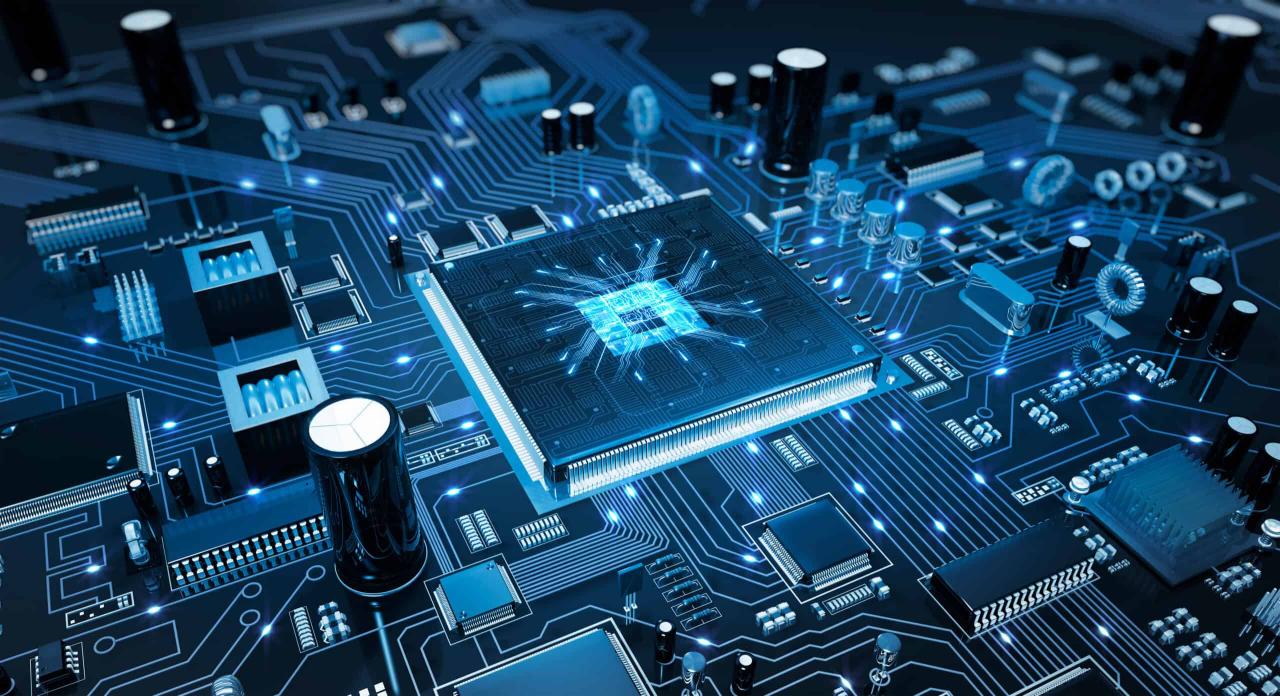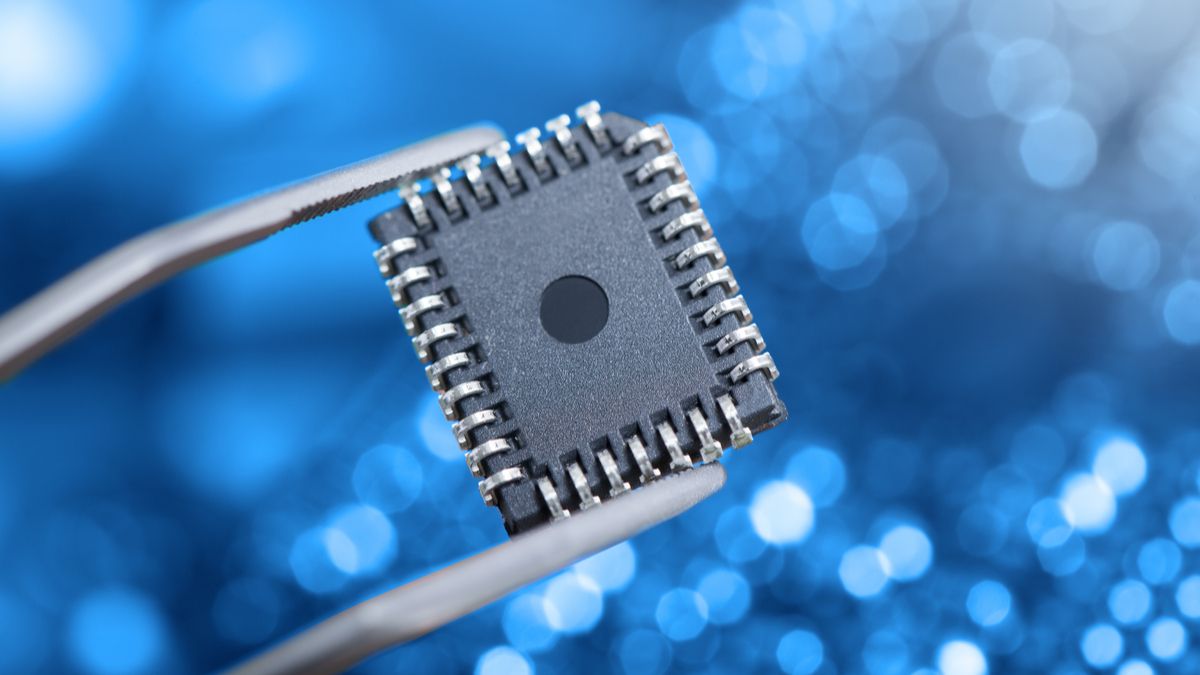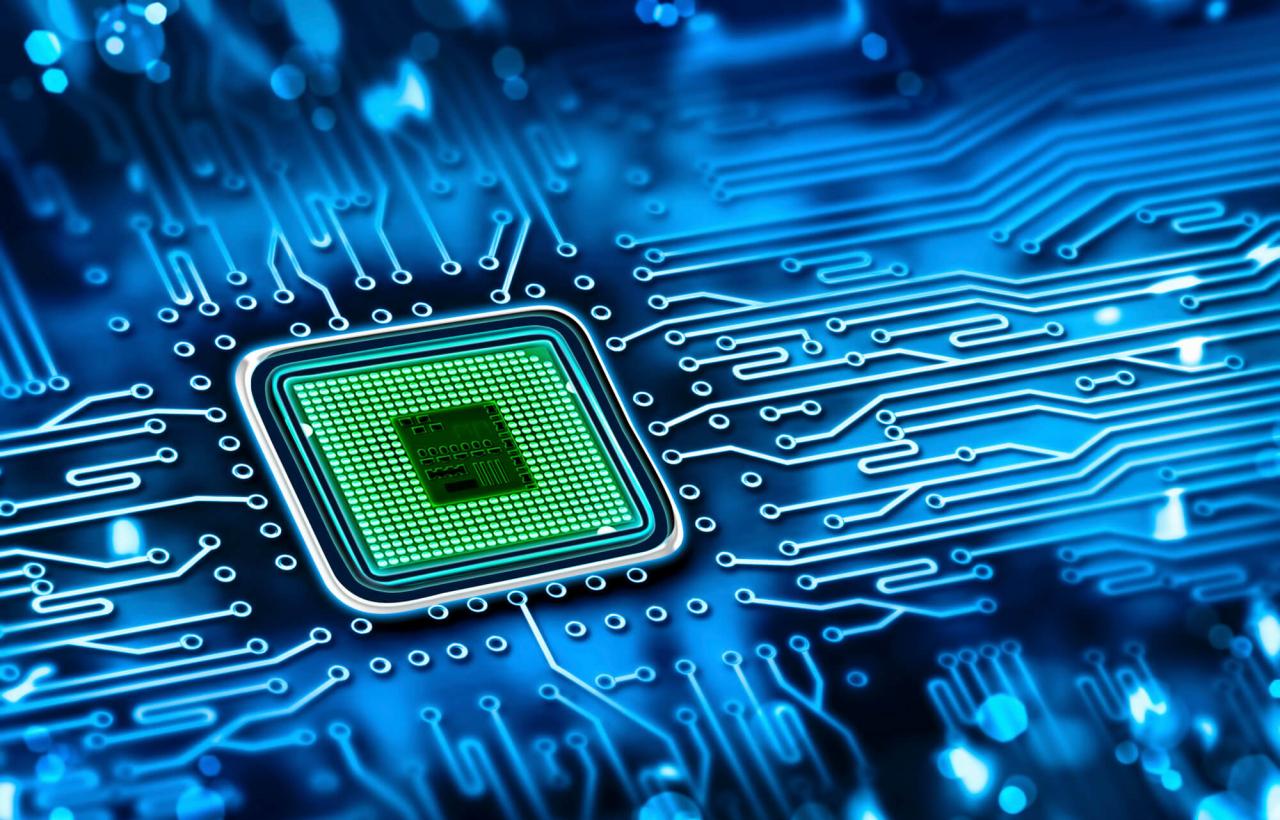Chip iPhone serves as a gateway into the remarkable world of mobile technology, illustrating how Apple has continually redefined smartphone capabilities. From the original iPhone to the latest iterations, each chip has played a pivotal role in enhancing performance, user experience, and functionality. As we delve into the evolution of chip technology, it becomes clear that these advancements are not just about speed; they influence everything from battery life to security features, solidifying Apple’s competitive edge in the ever-evolving smartphone market.
Evolution of Chip Technology in iPhones: Chip Iphone

The evolution of chip technology in iPhones has been pivotal in shaping the smartphone landscape. Since the release of the first iPhone in 2007, Apple has consistently pushed the boundaries of performance, efficiency, and capabilities through its innovative chip design. Each generation of chips has brought significant advancements, enhancing user experience and setting new standards in the industry.
The progression of chip technology in iPhones reflects not just improvements in raw processing power, but also enhancements in energy efficiency, integrated features, and artificial intelligence capabilities. The first iPhone utilized the ARM1176JZ(F)-S core, which offered a modest 412 MHz performance, primarily focusing on basic functionalities like calling and browsing. As technology advanced, subsequent models transitioned through various iterations of Apple’s A-series chips, leading to the powerful A15 Bionic chip found in the iPhone 13 and the cutting-edge A16 Bionic in the latest iPhone models.
Impact of Improved Chip Performance on User Experience
The advancements in chip technology have profoundly influenced user experience across various dimensions. With each new chip, Apple has introduced features that not only improve speed but also enhance the overall functionality of the device. Improved performance in graphics processing, machine learning, and multitasking capabilities enables users to enjoy richer applications, faster gaming experiences, and seamless interaction with augmented reality.
The introduction of specialized cores, such as the Neural Engine, has significantly boosted the capabilities of AI-driven applications, allowing for advanced photo processing, voice recognition, and intelligent battery management. This has made iPhones not just tools for communication, but versatile devices for entertainment, productivity, and creativity.
Role of Chip Design in Apple’s Competitive Advantage
Apple’s approach to chip design has played a crucial role in establishing its competitive advantage in the smartphone market. By designing its chips in-house, Apple ensures a seamless integration between hardware and software, leading to optimized performance tailored specifically for iOS. This holistic approach contrasts sharply with competitors who rely on third-party chip manufacturers, often resulting in less cohesive user experiences.
The strategic choice to prioritize custom silicon has allowed Apple to innovate rapidly and differentiate its products. For instance, the A14 Bionic chip introduced a 5nm process technology that not only increased performance but also reduced power consumption, showcasing Apple’s commitment to sustainability.
Furthermore, the proprietary nature of Apple’s chips fosters an ecosystem that is difficult for competitors to replicate. This has become evident in areas such as security, where integrated features like the Secure Enclave and hardware-based encryption provide users with enhanced protection against vulnerabilities.
As a result of these advancements, Apple continues to lead the smartphone market, drawing consumers who seek reliable performance and cutting-edge features in their devices. The ongoing evolution of chip technology remains a defining aspect of Apple’s strategy, setting benchmarks for the industry while enhancing the user experience across its product line.
Performance Metrics of iPhone Chips
The performance metrics of iPhone chips highlight the advanced engineering and technological prowess that Apple integrates into its devices. Recent generations of iPhone chips, such as the A15 and A16 Bionic, exhibit remarkable capabilities that not only surpass their predecessors but also outclass competitors in various aspects. A critical examination of these metrics provides insight into user experience and device efficiency.
Comparative Analysis of Chip Performance, Chip iphone
The performance of iPhone chips can be compared to leading competitors such as Qualcomm’s Snapdragon and Samsung’s Exynos. Key performance metrics include CPU speed, GPU performance, and neural processing capabilities. The following table illustrates the comparative specifications of recent high-end chips from Apple and its competitors:
| Chip | CPU Cores | Clock Speed (GHz) | GPU Cores | Neural Engine Cores |
|---|---|---|---|---|
| A16 Bionic | 6 | 3.46 | 5 | 16 |
| Snapdragon 8 Gen 2 | 8 | 3.2 | Adreno 740 | 7 |
| Exynos 2200 | 8 | 3.0 | Xclipse 920 | N/A |
The A16 Bionic chip’s architecture significantly enhances its processing power, allowing for superior performance in both single-threaded and multi-threaded tasks, which translates into smoother app experiences and faster computations.
Influence of Chip Performance on Battery Life
The relationship between chip performance and battery life is critical in modern smartphones. Apple’s focus on efficiency within its chip designs helps to optimize power consumption without sacrificing performance. Notably, the A16 Bionic incorporates a 4nm process technology, which improves energy efficiency compared to previous generations. This means users can enjoy longer usage times with intensive applications while maintaining optimal performance.
The impact of chip architecture on battery life can be summarized as follows:
- Reduced power consumption during low-intensity tasks contributes to extended standby time.
- Dynamic voltage and frequency scaling allows the chip to adjust its performance based on demand, thereby conserving energy.
- Integration of the neural engine enables on-device processing for AI tasks, reducing the need for cloud computing and further saving battery life.
Significance of Chip Architecture in Multitasking
The architecture of iPhone chips plays a pivotal role in enhancing multitasking capabilities. With advanced features such as multiple cores and efficient memory management, the iPhone can handle several applications running concurrently without lag.
The A16 Bionic leverages its six-core CPU, which includes two high-performance cores and four efficiency cores. This design ensures that demanding applications receive the necessary resources when needed while allowing less intensive tasks to run on the efficiency cores. As a result, this leads to a seamless user experience during multitasking.
Additionally, the integration of various components on a single chip—such as the GPU and neural engine—further facilitates efficient processing. This means that users can switch between applications, engage in video calls, and use high-performance apps simultaneously without noticeable slowdown, thereby enhancing productivity and user satisfaction.
“The synergy between performance and efficiency in iPhone chips not only defines the user experience but also sets a benchmark in the smartphone industry.”
Security Features Embedded in iPhone Chips

In the modern digital landscape, ensuring the security of user data is paramount. iPhone chips, particularly with their advanced architecture, integrate a range of security features designed to protect sensitive information from unauthorized access and threats. These features are pivotal in maintaining the trust of users who rely on iPhones for both personal and professional communications.
One of the core components of iPhone security architecture is the inclusion of hardware-based security elements. These elements provide a robust barrier against potential breaches, ensuring that even if the operating system is compromised, critical user data remains safeguarded. The hardware level of protection significantly enhances the overall security framework, making it more difficult for malicious actors to exploit vulnerabilities.
Secure Enclaves and Biometric Data Processing
Secure Enclaves are specialized processors embedded within iPhone chips that play a vital role in safeguarding sensitive information. These enclaves operate independently from the main processor, executing security-sensitive tasks in a secure environment. This separation is crucial for several reasons:
- Storage of Sensitive Data: Secure Enclaves store user biometric data, such as fingerprints and facial recognition data, securely. This data is never shared with the main iOS and cannot be accessed by unauthorized applications.
- Encryption of Data: All data processed within the Secure Enclave is encrypted, ensuring that even if the data is intercepted, it remains unreadable without the appropriate cryptographic keys.
- Tamper Resistance: The architecture of Secure Enclaves is designed to be tamper-resistant, meaning that attempts to physically access or manipulate the chip will trigger security protocols, resulting in the deletion of sensitive information.
The processing of biometric data is particularly important in enhancing user security. When a user unlocks their iPhone using Face ID or Touch ID, the biometric data is processed exclusively within the Secure Enclave. This means that the data is never transmitted to Apple servers or external systems, keeping it confined to the device.
“The design of Secure Enclaves ensures that sensitive data remains protected, enabling powerful features like biometric authentication without compromising security.”
In addition to biometric processing, iPhone chips support advanced encryption protocols. These protocols encrypt data at rest and in transit, further securing communications and personal information. The combination of hardware-based security measures and sophisticated software algorithms positions iPhone chips as a formidable barrier against unauthorized access and cyber threats.
Future Trends in iPhone Chip Development

The landscape of chip technology is ever-evolving, and Apple’s iPhone chips are at the forefront of this transformation. As we look ahead, several trends are poised to redefine iPhone models, enhancing performance, efficiency, and user experience. With advancements in semiconductor technology and innovations in artificial intelligence (AI), the next generation of iPhone chips is expected to bring significant changes that cater to user demands and emerging technological ecosystems.
Upcoming trends in chip development are likely to focus on efficiency, integration, and intelligence. As the demand for faster processing and smarter features increases, Apple is expected to leverage new materials and designs to enhance the capabilities of its chips. Key developments may include the integration of AI capabilities directly into the chip architecture, enabling real-time data processing and improved user interactions.
Innovations in Next-Generation iPhone Chips
The next-generation iPhone chips are expected to incorporate several groundbreaking innovations that could enhance overall device functionality and user experience. These innovations are likely to focus on three main areas:
1. 3nm Process Technology: Future iPhone chips will likely utilize advanced 3nm process technology, allowing for higher transistor density and lower power consumption. This enhancement not only boosts performance but also optimizes battery life, catering to the user’s need for prolonged device usage without frequent charging.
2. On-Chip Machine Learning Capabilities: With AI playing an increasingly integral role in technology, the integration of dedicated machine learning accelerators within iPhone chips is anticipated. This will enable more sophisticated features such as improved camera functionalities, enhanced voice recognition, and personalized user experiences, all processed locally for faster responses.
3. Enhanced Security Features: The evolution of security technologies is expected to continue with future iPhone chips. Innovations such as advanced encryption techniques and biometric security enhancements will be embedded to safeguard user data, ensuring that privacy remains a top priority amid growing cybersecurity concerns.
The impact of these innovations will extend beyond just performance; they are likely to redefine how users interact with their devices, making them more intuitive and responsive to individual preferences.
Impact of AI and Machine Learning on Chip Design
The integration of AI and machine learning technologies into chip design is set to revolutionize the functionality of iPhone chips. This shift will enhance processing capabilities, allowing devices to perform tasks that require advanced computation and decision-making. Key insights into this transformative impact include:
– Self-Optimizing Algorithms: Chips may incorporate algorithms that enable them to learn from user behavior and optimize performance in real-time. This means that the chip could adapt its processing power based on the applications being used, ensuring optimal efficiency and speed.
– Edge Computing: By supporting more edge computing capabilities, future iPhone chips can process data closer to the source rather than relying heavily on cloud computing. This shift will reduce latency and increase responsiveness, especially for applications requiring immediate processing, such as augmented reality (AR) and real-time gaming.
– Energy Efficiency: AI-driven chip designs are expected to enhance energy efficiency significantly. By intelligently managing power distribution based on workload, chips can optimize energy consumption, prolonging battery life and reducing the environmental impact of device usage.
The convergence of chip technology with AI and machine learning not only enhances the performance metrics of iPhones but also opens new avenues for innovation and user engagement, making future iPhone models more powerful, intelligent, and user-centric.
Query Resolution
What are the main features of the latest iPhone chip?
The latest iPhone chip features improved processing power, enhanced graphics capabilities, and advanced machine learning performance, enabling better multitasking and efficiency.
How does chip technology impact battery life in iPhones?
Chip technology optimizes power consumption, leading to longer battery life through efficient energy management and enhanced performance.
Are iPhone chips secure compared to other smartphones?
Yes, iPhone chips include hardware-based security features, such as secure enclaves and biometric data processing, which provide robust protection against unauthorized access.
What is the significance of chip architecture in iPhones?
Chip architecture is crucial as it enhances multitasking capabilities and overall device efficiency, enabling faster processing and smoother user experiences.
What future trends can we expect in iPhone chip development?
Future trends may include further integration of AI capabilities, more efficient chip designs, and advancements that enhance connectivity and security.
The Samsung Note7 generated a lot of buzz during its release due to its impressive features, but it was also infamous for battery issues that led to its eventual recall. Despite its short-lived presence in the market, the Note7’s design and technology set a benchmark for future smartphones.
Moving forward, the Samsung Galaxy S10 Plus arrived as a significant upgrade, boasting a larger display, enhanced camera capabilities, and a more robust battery life. Its sleek design and advanced features solidified Samsung’s reputation for delivering high-quality devices that cater to tech enthusiasts and casual users alike.